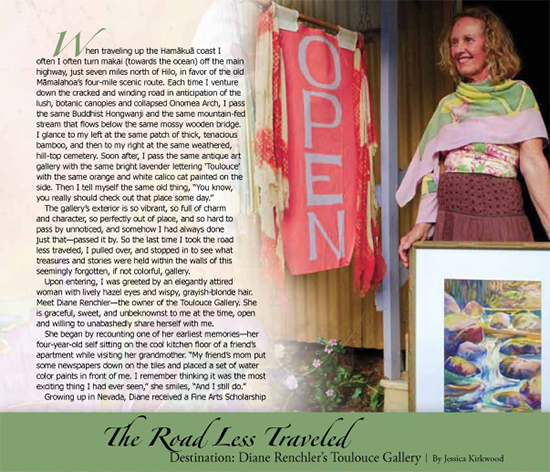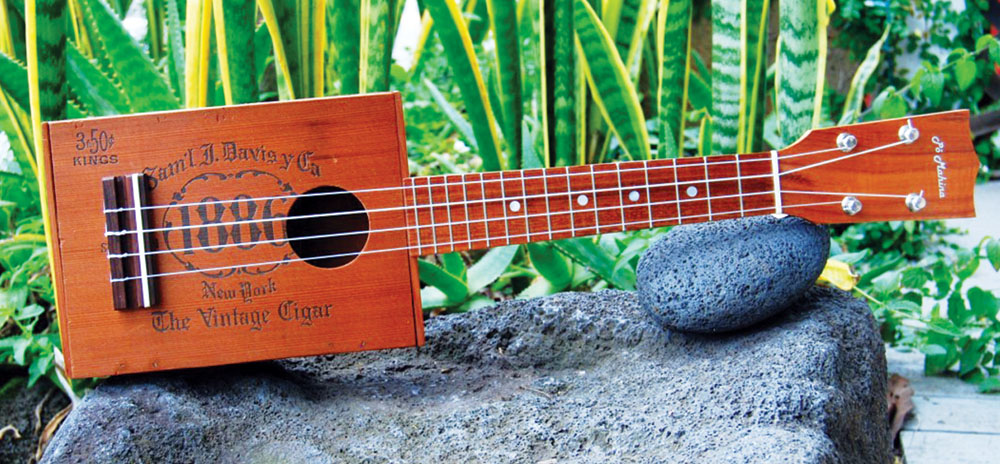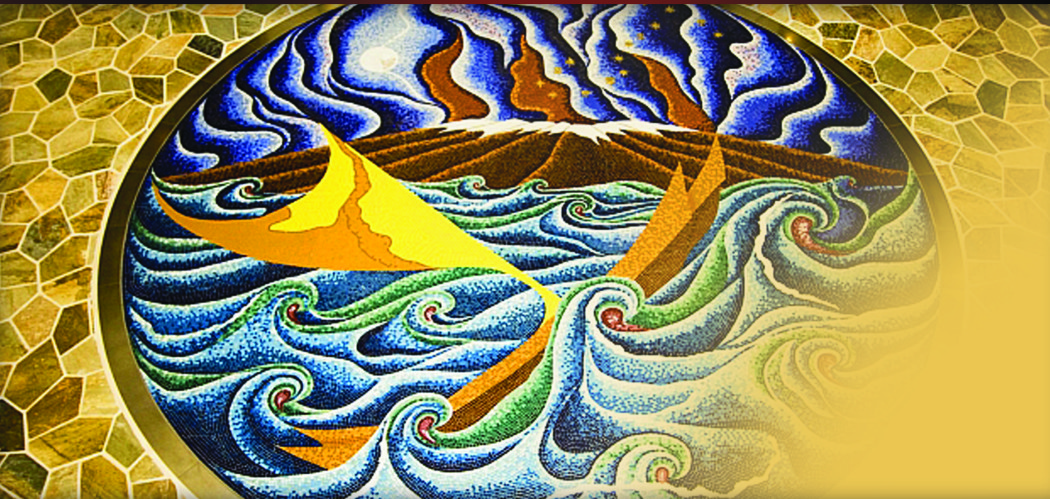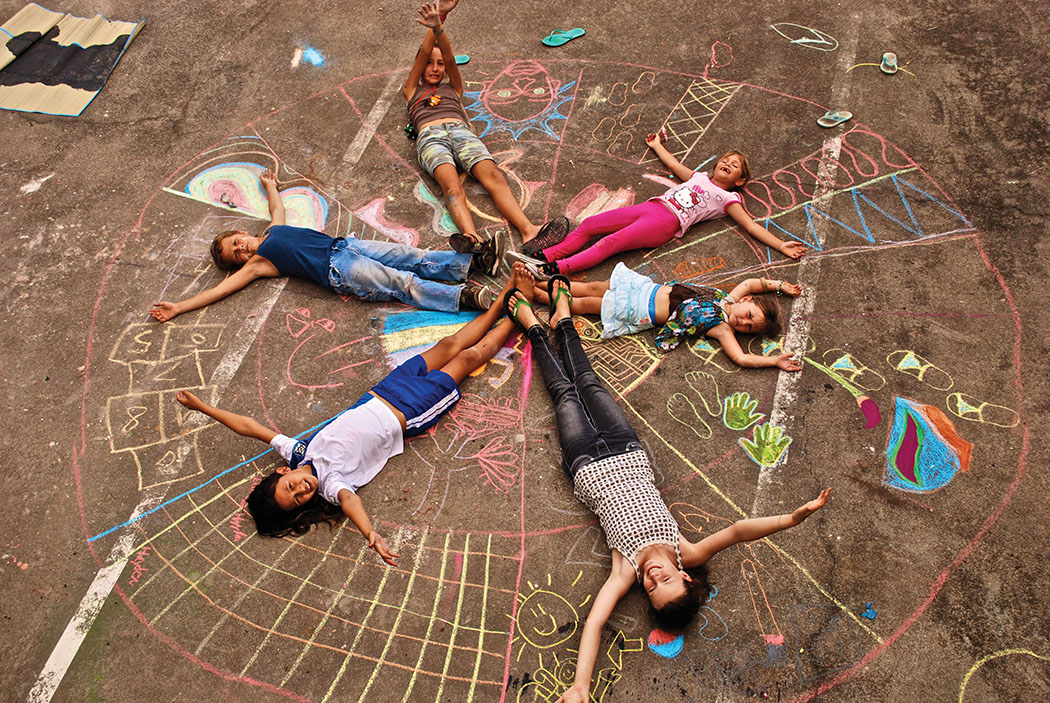
Where Art Found Its Place: Donkey Mill Art Center
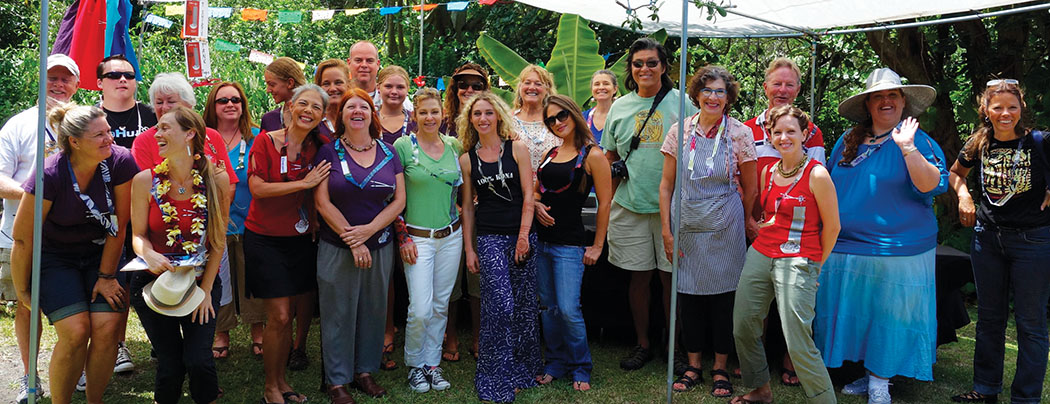
By Le‘a Gleason
Nineteen years ago—before a collaboration like this existed for South Kona—a group of artists gathered to share a vision. It was this decision to come together to “develop and expand opportunities in the community to enrich lives through art” that would birth the Holualoa Foundation For Arts and Culture.
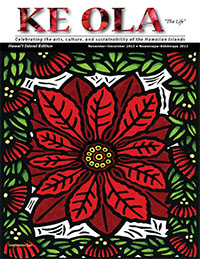
In 2001, the Foundation found its happy home in an old coffee mill known as the “Donkey Mill.” Today, what has become the Donkey Mill Art Center is a thriving representation of the Foundation’s original mission.
Five dedicated staff members head the team and are joined by a host of world-class artists who offer classes to people of all ages and walks of life. And it’s all in keeping with the mission to bring art to the people.
Anne Catlin is the Director of Programs at Donkey Mill. She’s an artist—primarily a painter—who has a history of working with nonprofit art centers including the East Hawaii Cultural Center and the Volcano Art Center. For Anne, finding the Donkey Mill meant more than just a new job.
“It’s been a wonderful blessing because it feels like [I’m] not only working in a field that I believe in strongly, but with people who are deeply heartfelt and really dedicated to the mission,” Anne said.
To Anne, this place has its own personality.
“It’s always people first,” she said. “We have a lot of visiting artists come through and they love that they feel immediately connected as family. Most of the people here, including the board, would tell you they’re here because of the people.”
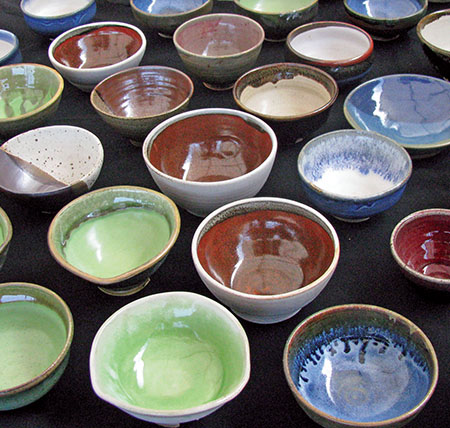
Underneath the Donkey Mill family and their dedication to art is always an underlying desire to use the Foundation’s status as a nonprofit organization to make sure that art is here to stay. One of the ways that is done is with a grant that strives to bring disappearing art programs back into schools.
“I think that creativity exists all around us. It’s in all of our expressions and it’s something that’s important to us at a soul level. It’s part of the overall balance of the whole person—physically, emotionally, spiritually…[and] it’s often under-recognized,” Anne said.
At Donkey Mill, one of the philosophies encouraged is creativity as a way of life. Anne and the staff work to call attention to the intrinsic creativity in people’s lives and to help them make the conscious choice to explore what that means.
Each year, the art center offers a wide array of art classes for beginners and beyond. Winters usually feature classes from visiting artists who are on vacation, sometimes from other countries. Summers are kid-centric, and devoted to helping children apply creativity to their daily lives.
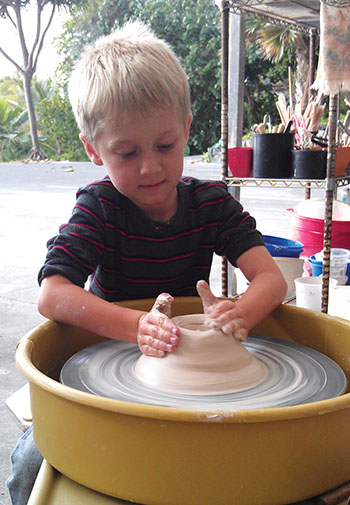
Miho Morinoue is the Youth Program Coordinator at Donkey Mill and her roots run much deeper. Her parents, Hiroki and Setsuko, are two of the original founders. Hiroki, a native of Japan, set a life goal of creating art and embarked on a journey of self-study many years ago. He has numerous public murals around the state, including one at the Pāhoa School and Community Library.
His daughter Miho has worked with the center formally for eight years. She has a background in classical ballet and danced with Complexions Contemporary Ballet Company in New York City for 10 years. When she wasn’t dancing, she was always engaged in some form of visual art.
For Miho, Donkey Mill has become her “other home” and when asked what she likes best, she was hard-pressed to choose, saying, “The art, the struggle [of creation], the food, company, community gatherings, the children, my fellow staff, and volunteers.”
The Children’s Program she coordinates is designed to explore making art through the lens of self, family, community, and world, she explained. Children’s art classes are among the most popular offerings at the center.
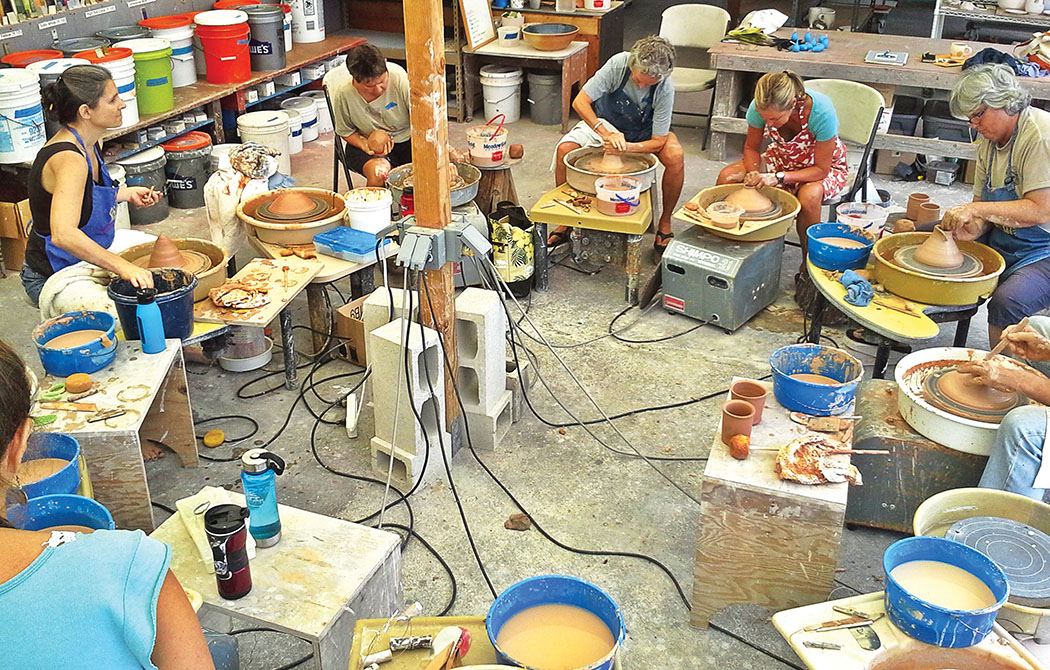
This year, 12-week programs are now shortened to six weeks, bringing in new teachers, focused mediums and subjects. Miho hopes it will allow for expansion of the teaching roster and build in flexibility and creativity through collaboration. She also hopes to incorporate more music, Hawaiian culture, and gardening/food into the curriculum in the future.
Another program that has been popular is the Ceramics Program headed by Claire Seatone, who’s been working with clay for 16 years.
“I grew up around handmade ceramics since my grandfather was a potter, and our house was full of his beautiful work, so I had an appreciation for it long before I ever touched clay,” Claire remembered.
Claire’s six-year-old son, Leo, will grow up watching his mother in the same way.
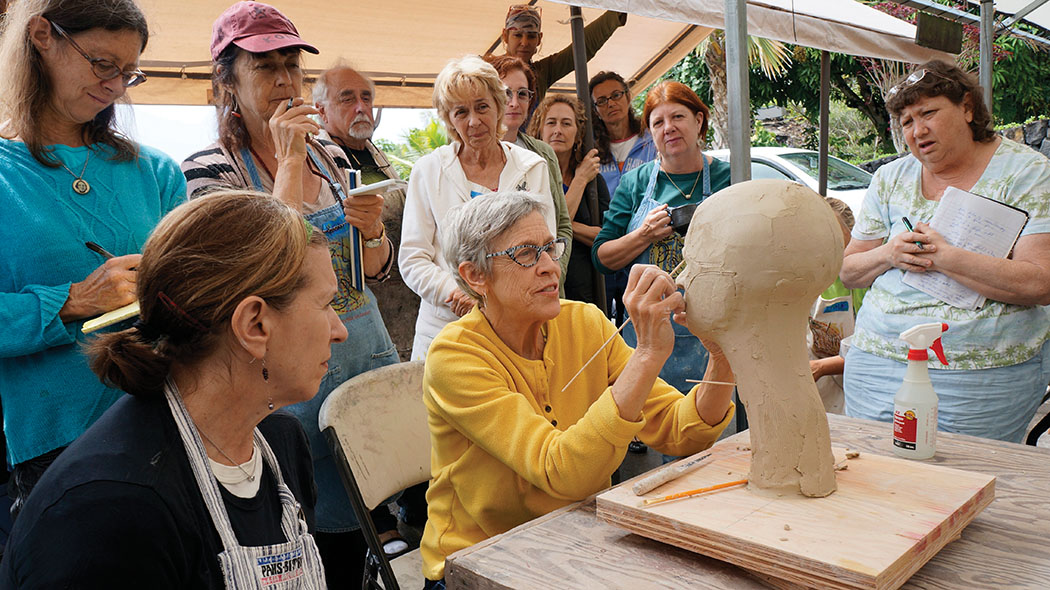
She studied ceramics in college, where she worked as an assistant and studio technician for the Ceramics Department while building a home studio for herself. Claire then spent two years as a studio assistant at La Meridiana, an international ceramics center in Tuscany, Italy.
“There are so many aspects of ceramics that I love,” Claire said. “I love the meditative process of working on the potter’s wheel. The versatility of raw clay in all its different stages keeps me learning about new ways to work with it all the time. I am entirely addicted to the incredible transformation by fire that happens in the kiln, putting in an object made of raw clay and ending up with a ceramic piece.”
Claire also said that she’s “challenged and intrigued by the complexity of ceramics as part art, part science, part expression, part therapy, part work.”
For Claire, who’s worked at Donkey Mill four years, she most enjoys spending time helping people get their hands in clay.
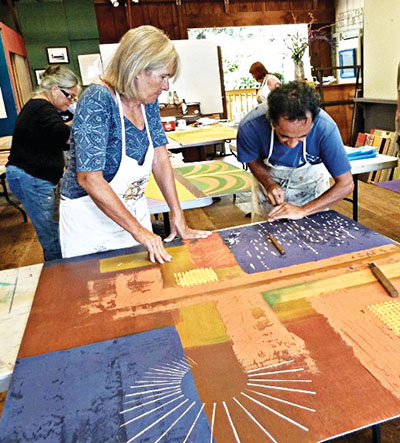
“It is such an accessible medium to work with, and there is nothing like watching a student’s eyes light up when they really start to get it. Although it’s not necessarily an easy medium to learn, it is so malleable and versatile that the process of working with it really is compelling and can be very intuitive,” Claire said.
In our changing world where art struggles for a place, it has found in Donkey Mill a place to call home, and for that, Donkey Mill Art Center has become an intrinsic part of West Hawai‘i.
“The Donkey Mill is a truly unique art center, and its mission is one which is critical to our well-being as a community. It was started out of deep heartfelt desire for our people to have a place to be creative and make art, with the intention to be open to all. The huge range of different media offered and the incredibly high quality of instruction are a great resource for people on this island,” Claire said.
Miho and Anne hold the center in high esteem as well. “I find that it is amazing this place exists in the middle of nowhere. I couldn’t live here without the Mill and that is the kind of people who tend to collect in this place,” Miho said.
To Anne, even the challenges serve as a reminder.
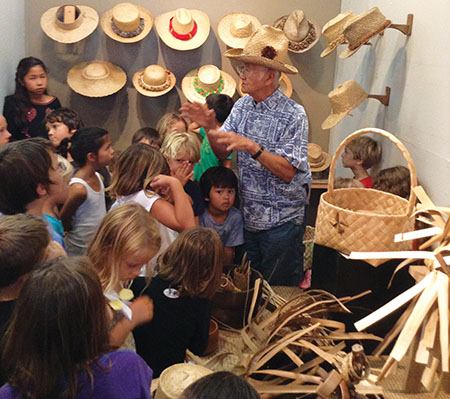
“It calls to mind how challenging the work is to advocate [for art]…it’s not until you’re in it that you realize how much it does struggle for a place. We are trying to engage and connect community in a meaningful way and illustrate the value of what this is,” Anne said.
In the future, Anne hopes to feature more local artists and add programming that reflects current issues that people might have a hard time processing without an artistic venue.
At Donkey Mill, creativity is an essential part of being human.
“For me, art is all about people communicating with each other about the common human experience and expressing their perspectives and observations. I think we as individuals are healthier and more balanced when we have opportunities for creative expression, and this makes our community stronger,” Claire said.
The Holualoa Foundation for Art and Culture found its home at the Donkey Mill—a place where art is nurtured. A place where artists are not merely creating art, they are creating a community. ❖

Photos courtesy Anne Catlin, Claire Seastone, Miho Kanani Morinoue
Contact Donkey Mill Art Center: DonkeyMillArtCenter.org
Contact writer Le‘a Gleason: gleamade@gmail.com
